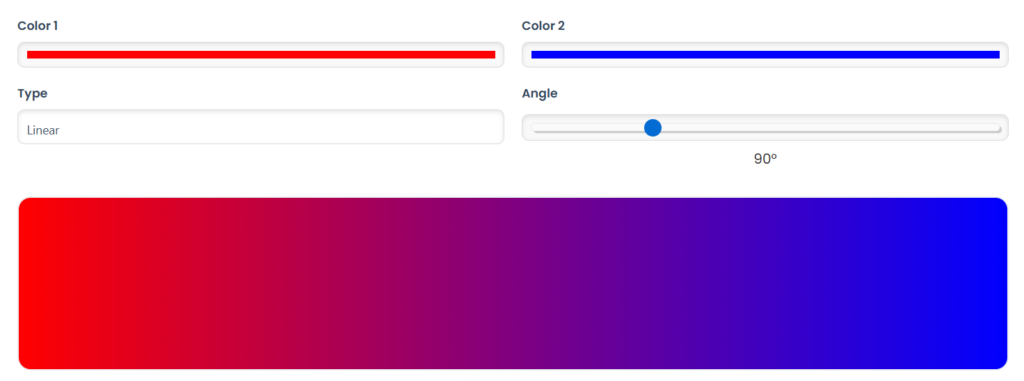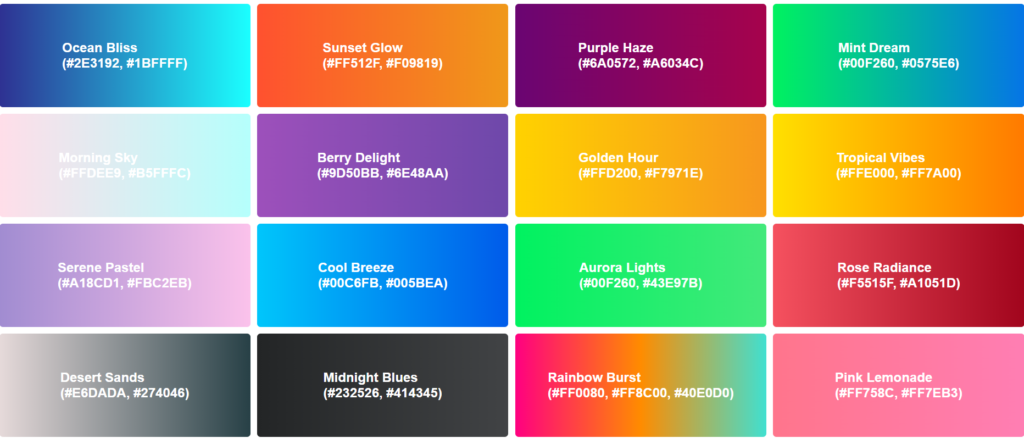The Blue Hex Color Code 0000FF
Color plays a vital role in design, branding, and digital communication. Among the myriad of colors available, blue stands out as one of the most versatile and widely used. Whether it’s the serene shade of light blue or the bold and powerful navy blue, the hex color code for blue is an essential tool for designers, developers, and creatives alike. This article dives deep into the world of blue hex color codes, offering insights, practical examples, and actionable advice to make your designs shine.
Content
What is a Hex Color Code?
A hexadecimal color code (hex code) is a six-character code used in digital design to represent colors. It begins with a hashtag (#) followed by six alphanumeric characters. These characters define the intensity of red, green, and blue (RGB) on a scale of 0 to 255, using hexadecimal values.
For example:
#0000FF represents pure blue.
#ADD8E6 represents light blue.
#4682B4 represents Steel Blue.
#5F9EA0 represents Cadet Blue.
#1E90FF represents Dodger Blue.
Hex color codes are indispensable in web design, graphic design, and other digital applications because they ensure color consistency across different devices and platforms.
The Importance of Blue in Design
Blue is often associated with trust, calmness, and professionalism. It’s no surprise that many global brands, including Facebook, Twitter, and LinkedIn, use blue in their logos and branding. Here are some common applications:
- Web Design: Blue is frequently used for backgrounds, buttons, and navigation menus.
- Branding: Its trustworthy connotations make it ideal for industries like finance, technology, and healthcare.
- UI/UX Design: Different shades of blue can guide user attention and create a calming interface.
Psychological Effects of Blue
Blue influences emotions and perceptions. Depending on the shade, it can evoke various feelings:
- Light Blue: Calming, gentle, and inviting, often used in wellness and healthcare sectors.
- Dark Blue: Serious, professional, and authoritative, suitable for corporate and educational institutions.
- Bright Blue: Energetic and attention-grabbing, perfect for technology and social media platforms.
Common Blue Hex Color Codes and Their Meanings
Here are some popular blue hex color codes, their RGB values, and where they are commonly used:
| Hex Code | Name | RGB Values | Common Uses |
|---|---|---|---|
| #0000FF | Pure Blue | (0, 0, 255) | Links, logos, and accents |
| #ADD8E6 | Light Blue | (173, 216, 230) | Backgrounds, calming themes |
| #4682B4 | Steel Blue | (70, 130, 180) | Buttons, secondary design colors |
| #5F9EA0 | Cadet Blue | (95, 158, 160) | Text, subtle design elements |
| #1E90FF | Dodger Blue | (30, 144, 255) | Call-to-action buttons |
| #000080 | Navy Blue | (0, 0, 128) | Professional branding, uniforms |
| #4169E1 | Royal Blue | (65, 105, 225) | Headlines, bold design accents |
| #87CEEB | Sky Blue | (135, 206, 235) | Nature-themed designs |
| #6495ED | Cornflower Blue | (100, 149, 237) | Youthful and vibrant designs |
How to Use Blue Hex Color Codes in Design
1. In Websites:
- Add the hex code to CSS stylesheets for consistency: body { background-color: #ADD8E6; }
- Use darker blues for text to ensure readability and contrast.
2. In Graphics Software:
- Programs like Adobe Photoshop or Canva allow you to input hex codes directly to apply specific shades of blue.
3. In Presentations:
- Light blue (#87CEEB) works well for slide backgrounds, while navy blue (#000080) can be used for headings.
Light blue #87CEEB:
Navy blue #000080
4. Accessibility:
- Always check contrast ratios to ensure that text and background combinations are accessible for all users.
Advanced Tips for Designers
Using Blue in Minimalist Design
Minimalism thrives on simplicity. Blue, particularly lighter shades like #ADD8E6, works seamlessly in minimalist designs to convey sophistication and clarity without overwhelming the viewer.
Creating Depth with Blue
Layering different shades of blue can create visual depth and hierarchy. For instance, combining #1E90FF and #000080 in backgrounds and text elements enhances visual appeal while maintaining cohesion.
Dodger Blue #1E90FF
Navy Blue #000080
Blending with Neutrals
Neutral tones like white (#FFFFFF) or gray (#D3D3D3) amplify the impact of blue. This pairing is widely used in corporate websites and professional branding.
White #FFFFFF
Gray #D3D3D3
Real-Life Examples of Blue Hex Codes
Case Study: Facebook’s Blue
Facebook’s signature blue (#1877F2) was chosen for its calming and professional qualities. This color creates a sense of trust and connection, aligning with the platform’s mission to bring people together.
Case Study: NASA’s Branding
NASA often incorporates navy blue (#000080) in its branding to reflect trust, exploration, and professionalism. The deep shade aligns with the organization’s innovative and authoritative image.
Hypothetical Scenario: Designing a Healthcare App
A healthcare app might use light blue (#ADD8E6) as the primary background color to evoke calmness, with navy blue (#000080) for text and icons to maintain professionalism. Steel blue (#4682B4) could serve as a secondary color for interactive elements.
Light blue #ADD8E6
Steel blue #4682B4
Practical Tips for Working with Blue Hex Codes
Pairing Blue with Other Colors
- Complementary Colors: Orange (#FFA500) is blue’s complementary color, creating vibrant contrast.
- Monochromatic Schemes: Combine shades like light blue (#ADD8E6), royal blue (#4169E1), and navy blue (#000080) for a cohesive look.
- Triadic Colors: Use blue with yellow (#FFFF00) and red (#FF0000) for a bold and balanced design.
Testing Across Devices
Always preview your designs on different screens to ensure the blue appears as intended. Slight variations in color rendering can affect the overall aesthetic.
Incorporating Gradients
Gradients add depth and interest. For example:
background: linear-gradient(to right, #1E90FF, #000080);
These gradients are perfect for buttons, headers, and backgrounds.
Research and Data on Blue in Design
Statistics:
- According to a study by the University of Toronto, blue is the most popular color globally, chosen by over 40% of people.
- A survey by HubSpot found that websites using blue tones had a 25% higher trust rating compared to those using other colors.
Expert Insights:
- Dr. Karen Schloss, Cognitive Psychologist: “The color blue’s association with calmness and reliability makes it a go-to choice for user-centric designs.”
- Mark Design, UX Specialist: “Using blue effectively in call-to-action elements can increase conversion rates significantly.”
Tools and Resources for Blue Hex Codes
- Color Pickers: Tools like Color picker allow you to experiment with blue shades and create cohesive palettes.
- Accessibility Checkers: Use tools like Contrast Checker to ensure designs meet accessibility standards.
- Design Platforms: Canva, Figma, and Sketch allow you to input hex codes for precise color application.
Frequently Asked Questions (FAQs) about Blue Hex Color Codes
Q1: What is the most common blue hex color code?
A: The most common is pure blue (#0000FF), frequently used in hyperlinks and digital interfaces.
Q2: How do I find the hex code for a specific shade of blue?
A: Use color picker tools available in design software or online resources like hexcolor and W3Schools.
Q3: Can blue hex codes be used for print design?
A: Yes, but they must be converted to CMYK values to ensure accurate color reproduction in print.
Q4: What is the best blue hex code for call-to-action buttons?
A: Bright blues like Dodger Blue (#1E90FF) are highly effective for drawing attention to CTAs.
Conclusion
The blue hex color code is an indispensable tool for designers and developers. Its versatility, ranging from calming light blues to authoritative navy shades, makes it suitable for various applications, including web design, branding, and UI/UX. By understanding the nuances of blue hex codes and applying them effectively, you can create designs that are not only visually appealing but also impactful and meaningful.
So, the next time you’re working on a project, consider the power of blue. Experiment with different shades, test your combinations, and let this timeless color elevate your designs to the next level. Whether it’s the calming sky blue (#87CEEB) or the commanding navy blue (#000080), the right shade of blue can transform your creative vision into reality.


